|
What are the recent developments on the
abortion issue?
Abortion continues to be an important issue
for American voters. The partisan political divide on
the abortion issue mirrors the sharp divide in
public opinion on the subject. Most recently the Planned Parenthood organization has come under attack from many Republican politicians because of a video discussing the use of fetus tissue obtained from abortions for medical purposes.
How has the abortion debate developed?
Prior to the controversial 1973 Supreme
Court decision in Roe v. Wade,
all fifty states banned abortion, with some
exceptions which varied by state: to save the
life of the mother, in cases of rape or incest,
or if the fetus was deformed. This legislative
ban reflected the prevailing public attitude
towards abortion. The Roe decision
declared most existing state abortion laws
unconstitutional based on a "right of privacy"
which the court determined to be implied by the
bill of rights. This decision ruled out any
legislative interference in the first trimester
of pregnancy and put limits on what
restrictions could be passed on abortions in
later stages of pregnancy.
The timing of the Roe decision
coincided with an emerging national focus on
women's civil rights. Many celebrated the
decision but others, especially in the Roman
Catholic Church and in theologically
conservative Christian groups, opposed the
change. "Pro-life" and "pro-choice" evolved as
the most common self-chosen names of the two
movements, one to outlaw most abortion and the
other to eliminate most legislative
restrictions on abortions.
Today, the controversy over abortion remains
a focus of political debate. A
majority of voters favor legalizing most
abortions  (Click to
see chart) although the
number of "pro-life" supporters has increased
in the past decade. (Click to
see chart) although the
number of "pro-life" supporters has increased
in the past decade.
 The concern of many
"pro-choice" advocates is the possibility that
the Roe decision could be overturned.
Although the Supreme Court rarely completely
reverses precedent, the Roe decision
rests on a unique interpretation of the bill of
rights and recent rulings have limited this
interpretation. The concern of many
"pro-choice" advocates is the possibility that
the Roe decision could be overturned.
Although the Supreme Court rarely completely
reverses precedent, the Roe decision
rests on a unique interpretation of the bill of
rights and recent rulings have limited this
interpretation.
On the other hand attitudes have changed
since 1973 and a far greater number of
Americans, especially women, no longer oppose
abortion and it is likely that many states
would not now ban the practice if the
Roe decision were overturned. The
majority of political efforts on behalf of
abortion opponents have focused on banning
public funding of abortions, on banning late
term abortions, and banning the licensing and
distribution of the "abortion pill". The degree
to which publicly financed abortions are
permitted varies significantly from state to
state.  (Click to
see map) A
substantial number of states require that a
minor obtain parental consent prior to
obtaining an abortion. (Click to
see map) A
substantial number of states require that a
minor obtain parental consent prior to
obtaining an abortion. 
Is abortion legal worldwide?
There is no international consistency
regarding the legality of abortion.
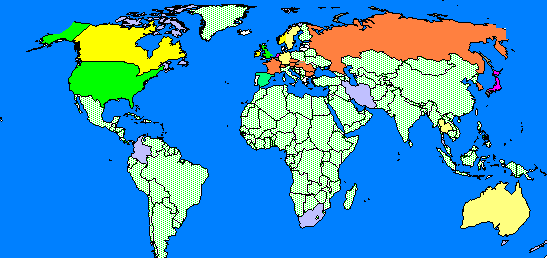 Abortion is
generally permitted in most developed countries
and prohibited (except to save the life of the
mother) in most underdeveloped countries. The
rules are also influenced by the role of
religion; in most Muslim countries abortion is
prohibited and it is also restricted in
Catholic Latin America. In the countries
where abortions are restricted, illegal
abortions are common although their precise
number is difficult to quantify. According to
the best estimates, over 40% of all abortions
annually are illegal. In countries such as
Peru, Chile and Brazil, the overall abortion
rate is higher than it is most countries where
abortion is available on demand. The high rate
in these countries bears some relationship to
the fact that contraceptive practices are not
as common as they are in the United States and
Europe.
Abortion is
generally permitted in most developed countries
and prohibited (except to save the life of the
mother) in most underdeveloped countries. The
rules are also influenced by the role of
religion; in most Muslim countries abortion is
prohibited and it is also restricted in
Catholic Latin America. In the countries
where abortions are restricted, illegal
abortions are common although their precise
number is difficult to quantify. According to
the best estimates, over 40% of all abortions
annually are illegal. In countries such as
Peru, Chile and Brazil, the overall abortion
rate is higher than it is most countries where
abortion is available on demand. The high rate
in these countries bears some relationship to
the fact that contraceptive practices are not
as common as they are in the United States and
Europe.
 Illegal abortions
are also becoming increasingly safer due to the
use of two medications: mifepristone and
misoprostol. Misoprostol is widely available
worldwide as an ulcer medication but is being
used safely and effectively either alone or
with mifepristone in what have become known as
a "medical abortions". Illegal abortions
are also becoming increasingly safer due to the
use of two medications: mifepristone and
misoprostol. Misoprostol is widely available
worldwide as an ulcer medication but is being
used safely and effectively either alone or
with mifepristone in what have become known as
a "medical abortions".
How many abortions are performed each
year in the United States?
The number of abortions in the United
States under the most recent figures is 20 per
1000 women of childbearing age. The abortion
rate has significantly dropped since the early
'80s.  (Click to
see chart) According to current data,over
40% of U.S. young women aged 40 to 48 had
experiened an abortion. (Click to
see chart) According to current data,over
40% of U.S. young women aged 40 to 48 had
experiened an abortion. 
What are the characteristics of abortion
recipients?
In comparsion with most women of
childbearing age, abortion recipients tend to
be young  , poor , poor  ,
and unmarried. ,
and unmarried.  According to a 1987
survey, abortion recipients indicated a variety
of reasons for their decision. According to a 1987
survey, abortion recipients indicated a variety
of reasons for their decision.
 The teenage abortion rate has dramatically declined since the 1980's. The teenage abortion rate has dramatically declined since the 1980's.
 This is due both to a decline in teen pregnancies and that more pregnant teens are choosing to give birth. This is due both to a decline in teen pregnancies and that more pregnant teens are choosing to give birth. 
What is the controversy about "partial
birth" abortions?
So-called "partial birth" abortions are
procedures in which the person performing the
abortion partially delivers vaginally a living
unborn child before killing the unborn child
and completing the delivery. Under most
statutes, it has been unclear whether the term
applies to many late term abortions or only
those involving the "D&X" procedure where
the fetus is in the breech condition and thus a
live fetus is partially extracted from the
mother's body before the abortion is finalized.
When it is used type of procedure is typically
performed after the 15th week of
pregnancy. Because of the unclear definition
accorded to the procedure, the Supreme Court
invalidated a Nebraska statute which had
prohibited such abortions.
Earlier a proposed federal statute which would
have imposed this ban was vetoed by President
Clinton, and the Senate did not have sufficient
votes to override this veto.  Justice O'Connor's concurring opinion indicated
that if the ban had applied only to the
"D&X" procedure, and if there had been an
exception to the ban to protect the life and
health of the mother, a different conclusion
might have been reached. New federal
legislation has now passed the Senate
Justice O'Connor's concurring opinion indicated
that if the ban had applied only to the
"D&X" procedure, and if there had been an
exception to the ban to protect the life and
health of the mother, a different conclusion
might have been reached. New federal
legislation has now passed the Senate  and the House and the House  which would
again ban this procedure and this legislation
has been signed by the President. The
constitutionality of this legislation is
questionable because it does not have a
provision which would protect the health of the
mother. A federal district court has already
issued a ruling indicating that the statute is
unconstitutional. In April 2007, the newly
constituted Supreme Court upheld the the 2003
legislation, effectively overruling the prior
decision involving the Nebraska
legislation. which would
again ban this procedure and this legislation
has been signed by the President. The
constitutionality of this legislation is
questionable because it does not have a
provision which would protect the health of the
mother. A federal district court has already
issued a ruling indicating that the statute is
unconstitutional. In April 2007, the newly
constituted Supreme Court upheld the the 2003
legislation, effectively overruling the prior
decision involving the Nebraska
legislation.
How do Democrats and Republicans stand on
abortion issues?
Abortion has been a partisan issue. The
vast majority of Democrats are pro-choice and
this position is reflected in the 2012
Democratic platform document. The 2012
Republican platform contains a strong
endorsement of the pro-life position and
advocates legislation to make clear that the
Fourteenth Amendmentís protections apply to
unborn children. Most Congressional votes on
the abortion issue follow this partisan
pattern.
Abortion Links
Wikipedia: Abortion Debate
Open
Directory Project:
Abortion
Allan Guttmacher Institute: Abortion
|
Charts
(click to enlarge)
Public Opinion on Abortion
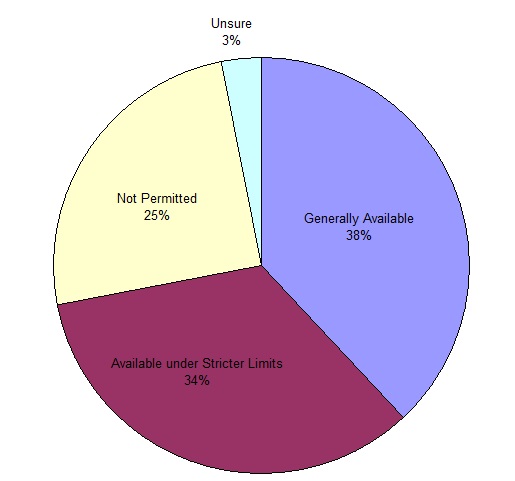
Percentage of Americans Who Consider Themselves "Pro-Life"
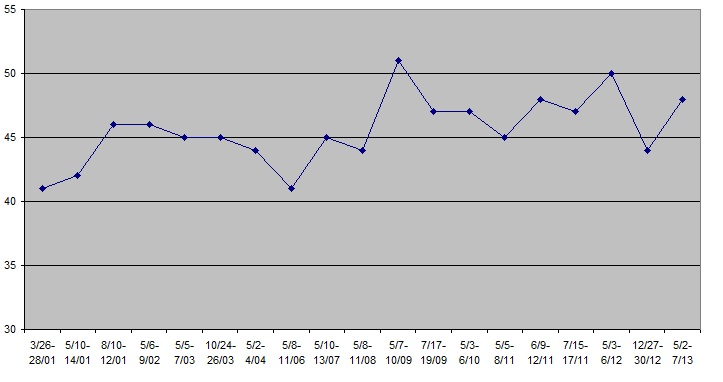
State Policies for Medicaid Abortions
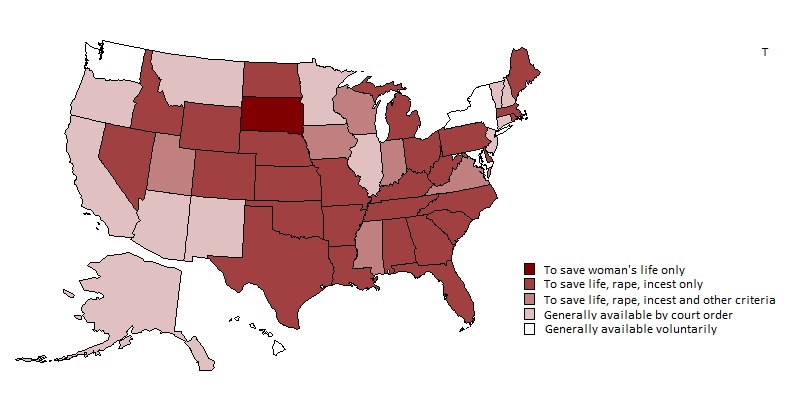
State Rules on Parental Notification/Consent
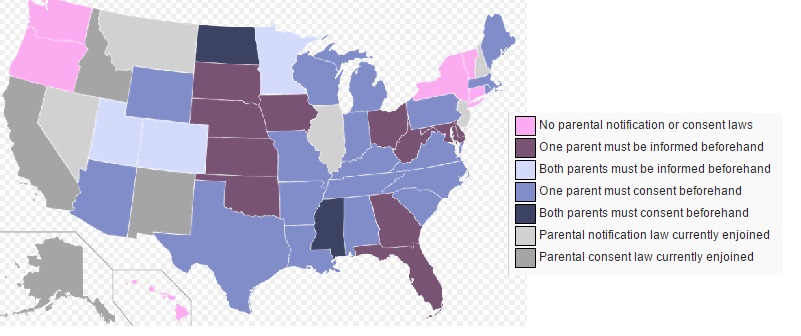
World Laws on Abortion
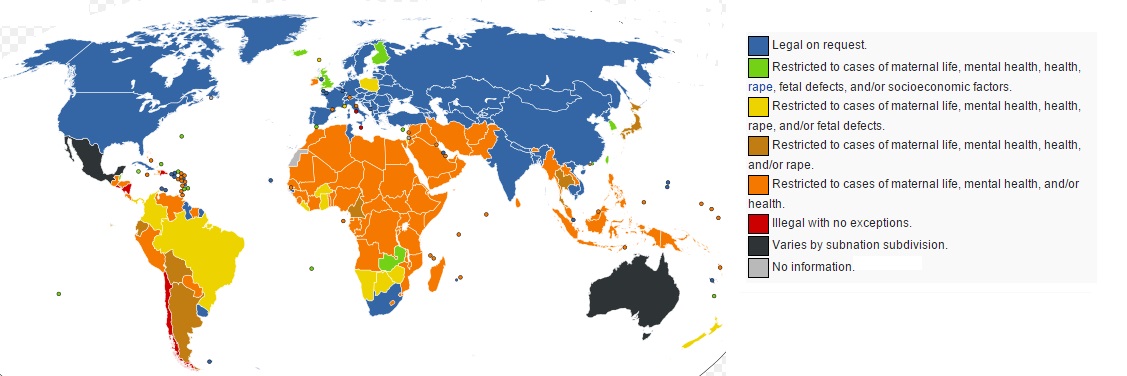
World Abortion Rates
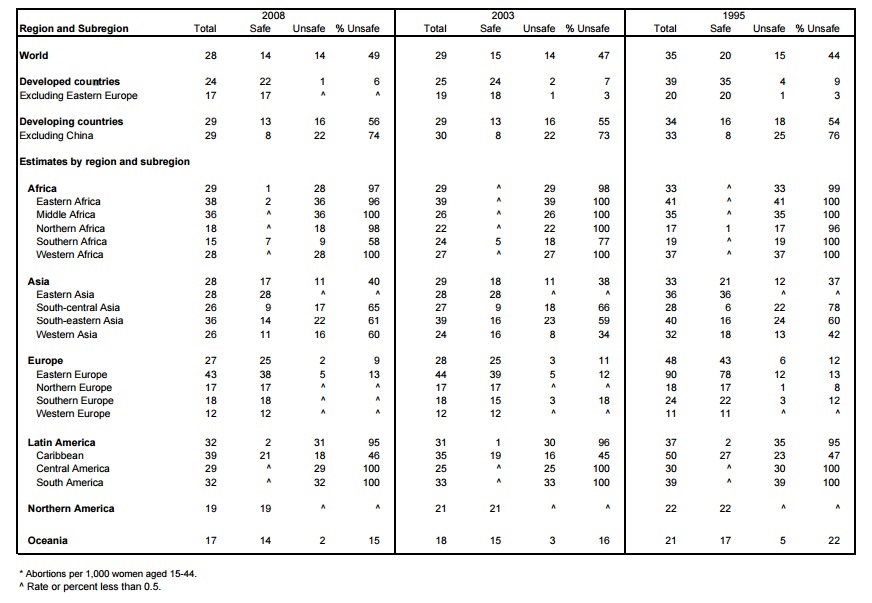
Abortion Rate 1973 - 2007
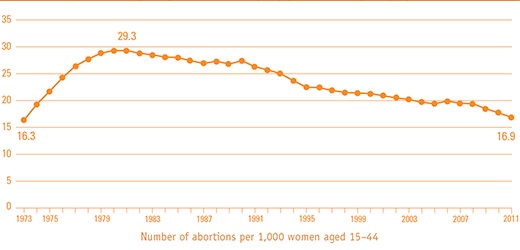
Percentage of Lifetime Incidence of Abortion for Various Age Groups
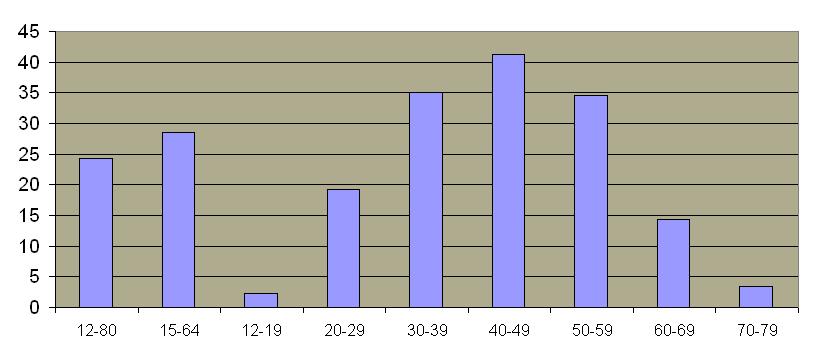
Age of Abortion Recipients
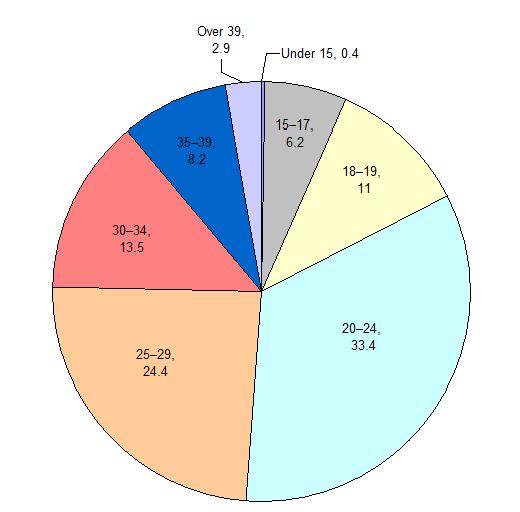
Poverty Status of Abortion Recipients
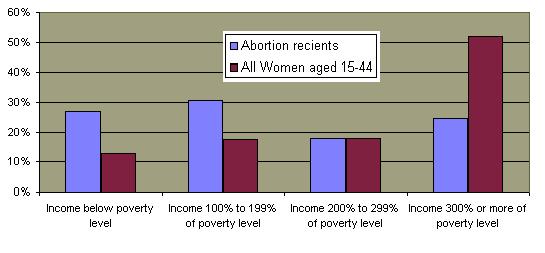
Marital Status of Abortion Recipients
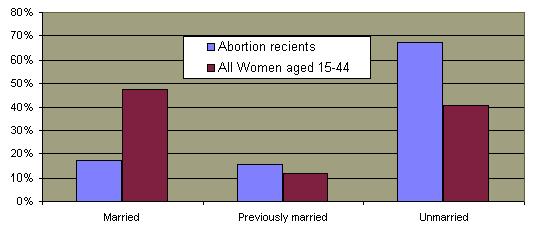
Primary Reason for Abortion Decision
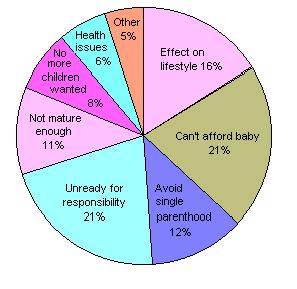
Teen Abortion Rate 1973-2006
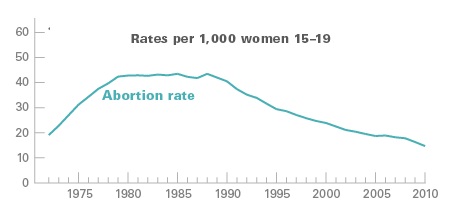
Teen Pregnancy Outcomes, 1990 and 2006

Senate Vote to Override Veto on Partial Birth Abortion Bill
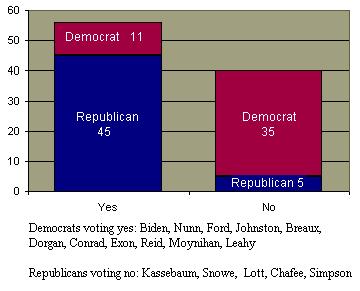
Senate Vote to Ban Partial Birth Abortions

House Vote to Ban Partial Birth Abortions
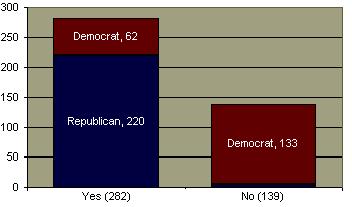
|

